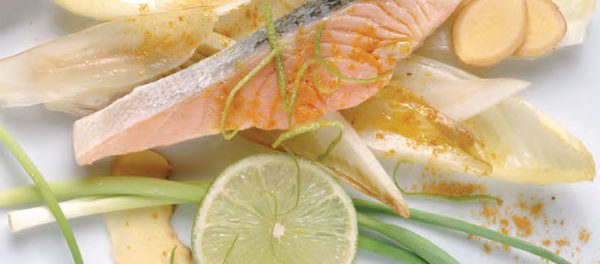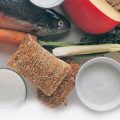Fish: Good For Your Heart and Mind
By Janis Roszler, RD, CDE, LD/N
The American Heart Association suggests that adults eat fish at least twice a week. A serving equals 3.5 ounces of cooked fish or ¾ cup of flaked fish, such as canned tuna or salmon. Here are some tips to help you add fish to your weekly meal plan.
1 CHOOSE WELL
Look at and smell your fish before you buy it from your local market. When fish is caught, it is at its freshest. Once it is taken from the water, it will start to lose some color and slowly begin to smell “fishy.” Choose fish with clear eyes, a healthy color with some color in the gills, and a mild, sweet, ocean-like smell. The flesh should be firm and shiny. Fresh blood inside the fish or in its veins is a good sign that your fish is still fresh.
2 JUMP START YOUR DAY
Fish isn’t just for dinner. Try some herring or a few slices of smoked salmon for breakfast. Tuna or salmon salad make for a protein-rich lunch.
3 VISIT YOUR GROCERY FREEZER
Frozen fish is great but don’t buy it if it has frost or ice crystals or if its package is open or torn. Frozen fish shouldn’t be refrozen. If you can’t use it that night, wrap the fish up and store it in the
coldest part of your fridge for no longer than a day or two.
4 BE PATIENT
Busy fish markets attract many buyers and sell their supply of fish quickly. Don’t get upset if you must wait in a line for a while. The fish at a busy store isn’t sitting around for long.
5 COOK IN A HEALTHY WAY
Grilling, baking, poaching and broiling are four healthy ways to prepare fish.
If you choose to grill it, coat it lightly with a small amount of heart-healthy oil, such as canola or olive oil and wrap it in aluminum foil before you put it on the grill. This will help keep it moist. Most fish needs only a few minutes of grilling per side and will keep cooking for a bit longer after you remove it from the grill.
If you’d rather broil your fish in the oven, add a sauce or marinade to keep it moist. Just be sure to keep an eye on it as it cooks. Most recipes suggest specific cooking times, but thinner pieces
will take less time to cook than thicker ones.
6 CHOOSE READY-MADE ITEMS WITH CARE
Many pre-cooked fish dishes have a lot of fat and calories that you don’t need. Most ready-made fish sticks and fish patties are made with types of fish that are not rich in healthy omega-3 fatty acids. They may also contain saturated or trans fats that are not good for your heart.
Canned fish is a good choice. Depending on where you live (and your budget) fresh fish may not always be an option. Canned fish, such as tuna, salmon, and sardines, can also give you heart-healthy omega-3 fatty acids and protein. Canned salmon is also high in calcium. Buy canned fish packed in water, as opposed to oil.













